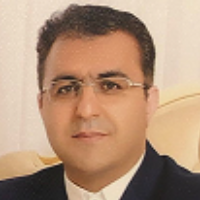Wireless monitoring: a requirement in evaluating physiologic parameters of critically ill patients in emergency department
Author(s):
Abstract:
Recording physiologic factors such as cardiac, respiratory, and circulatory parameters (such as central and peripheral blood pressure) is among the most basic cares provided in emergency departments (ED). ED, as the first line of providing health care in hospitals, has many visitors with various levels of urgency every day. Usually, these patients are classified using various triage systems on arrival and those with more emergent conditions are dispositioned to cardiovascular resuscitation units or intensive care units. In some emergency departments, all beds are equipped with advanced monitoring systems.Among these monitoring systems are monitors for pulse rate and rhythm, blood pressure monitoring, pulse oximeter, respiratory carbon dioxide monitoring, etc. These systems provide accurate real-time data regarding the patient’s hemodynamics for the medical team and help them make more rapid and accurate decisions. However, the large number of wires, tubes and labels is unpleasant for the medical team and sometimes even interferes with initiation of resuscitation and accurate examination of the patient. In addition, following disposition, sweating, patients being cleaned up by the staff, etc. problems may arise regarding unplugging or even damage to the tubes or wires connected to the patient. In addition, since other specialists are not present in ED full-time, with the current systems sending real-time data to them is difficult if not impossible.It seems that considering the significant advances in the fields of electronic and mechatronic, we can use wireless systems for this purpose. Limited efforts have been made in this field, but there is still a need for problem solving and designing systems that can be installed on the existing devices to make them wireless. If this is done, we might be able to share monitoring data more easily via Bluetooth or other existing technologies. Whatever the case, in this letter a problem in everyday practice has been addressed and solving this problem requires cooperation from electronic and mechanic specialists as well as physiologists and cardiologists.This method may be able to convert the mobile phones of physicians in charge of these patients to a portable monitoring device, so that they will be able to make an instant diagnosis, take rapid treatment measures, and save critically ill patients’ lives. Hereby, all the readers of this short letter who have the knowledge and specialty to participate in this project are invited to cooperate in this regard.
Keywords:
Language:
English
Published:
Journal of Medical Physiology, Volume:1 Issue: 2, Autumn 2016
Page:
41
magiran.com/p324536
دانلود و مطالعه متن این مقاله با یکی از روشهای زیر امکان پذیر است:
اشتراک شخصی
با عضویت و پرداخت آنلاین حق اشتراک یکساله به مبلغ 1,390,000ريال میتوانید 70 عنوان مطلب دانلود کنید!
اشتراک سازمانی
به کتابخانه دانشگاه یا محل کار خود پیشنهاد کنید تا اشتراک سازمانی این پایگاه را برای دسترسی نامحدود همه کاربران به متن مطالب تهیه نمایند!
توجه!
- حق عضویت دریافتی صرف حمایت از نشریات عضو و نگهداری، تکمیل و توسعه مگیران میشود.
- پرداخت حق اشتراک و دانلود مقالات اجازه بازنشر آن در سایر رسانههای چاپی و دیجیتال را به کاربر نمیدهد.
دسترسی سراسری کاربران دانشگاه پیام نور!
اعضای هیئت علمی و دانشجویان دانشگاه پیام نور در سراسر کشور، در صورت ثبت نام با ایمیل دانشگاهی، تا پایان فروردین ماه 1403 به مقالات سایت دسترسی خواهند داشت!
In order to view content subscription is required
Personal subscription
Subscribe magiran.com for 70 € euros via PayPal and download 70 articles during a year.
Organization subscription
Please contact us to subscribe your university or library for unlimited access!


